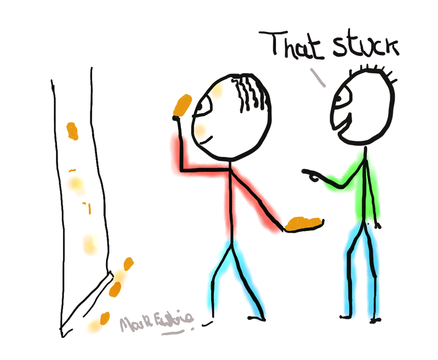
Throwing Stuff at the Wall: The Right Way to Build for Indie Hackers
I recently stumbled upon the product 750 Words again. The first time I heard about it was about ten years ago when I was practicing English writing. I would open the site daily and write whatever came to mind without any hesitation until I reached 750 words.
The core idea of 750 Words is to encourage and help users develop a writing habit of jotting down 750 words daily. You don’t need to worry about who will read it (since what you write is private), nor do you need to be concerned about how coherent it sounds—just write. This product was inspired by a habit called Morning Pages, recommended by the author of the book The Creative Soul.
In 2019, 750 Words reached a monthly revenue of $20,000, enabling its developer, Buster Benson, to quit his job and work on it full-time.
Today, I want to share Buster Benson’s approach to work as an independent developer, which I believe is the way forward for most independent developers.
One of Buster Benson’s interviews was posted on Hacker News. Among the comments, there was a this person asking: Despite most advice for independent developers leaning towards creating B2B products, 750words is a B2C product. If an independent developer wants to make a B2C product, what unique features do you think it should have?
Buster Benson replied: Don’t worry about the B2B or B2C labels. Focus more on building something useful that people are willing to pay for. Then, validate your idea as early and frequently as possible.
750 Words is a product born from this approach.
Buster spent a week launching the first version and wrote a blog post to introduce the product. For a long time after that, he fixed bugs, dealt with operational issues in his spare time, and frequently had to repair data. Despite minimal marketing and even considering shutting down the product due to work pressures, 750words continued to grow slowly and steadily, building a loyal user base. Eventually, after gathering user feedback, he introduced a pricing strategy of $5 per month.
This product might sound like a fluke, a stroke of luck. But what’s less known is that Buster attempted over 20 projects before this one, none of which succeeded.
In my view, frequently launching products that are within your capability is the most effective path for most independent developers.
The founder of Indie Hackers has shared how he evaluates business ideas. Essentially, a good business idea must first address a valuable problem. The audience for this problem must be large enough, you must have a way to reach them, and they must be willing to pay to solve the problem. With so many conditions to meet, it’s evident that finding a valuable problem is difficult.
To find a good problem, you first need to be able to access the problem itself. But in reality, many indie hackers are far removed from the market, leading to an incomplete understanding of the problem, and often they don’t even realize the problem exists.
Why are indie hackers so keen on creating “the trifecta” (budgeting apps, journaling apps, and to-do apps)? Because these are products we all use daily, and there are always some ideas for improvements. But these ideas, when combined with other necessary conditions, often don’t make for good business ideas.
The only way to address unfamiliarity about the market is by rapidly launching products to the market and gathering feedback to gain a more comprehensive and objective understanding of the problem.
The products you launch don’t have to be large or perfect, as long as they solve a specific problem. They don’t even have to be software products; they could be informational products, such as a PDF handbook. However, small doesn’t mean you can ignore marketing and pricing; you still need to consider and validate these aspects.
Why launching rapidly ? For indie hackers, time is the greatest cost (after all, survival is a real issue), and succeeding on the first try is rare. To increase your chances of success, you need to increase the number of attempts.
Image credited to Michelle Monet at Medium